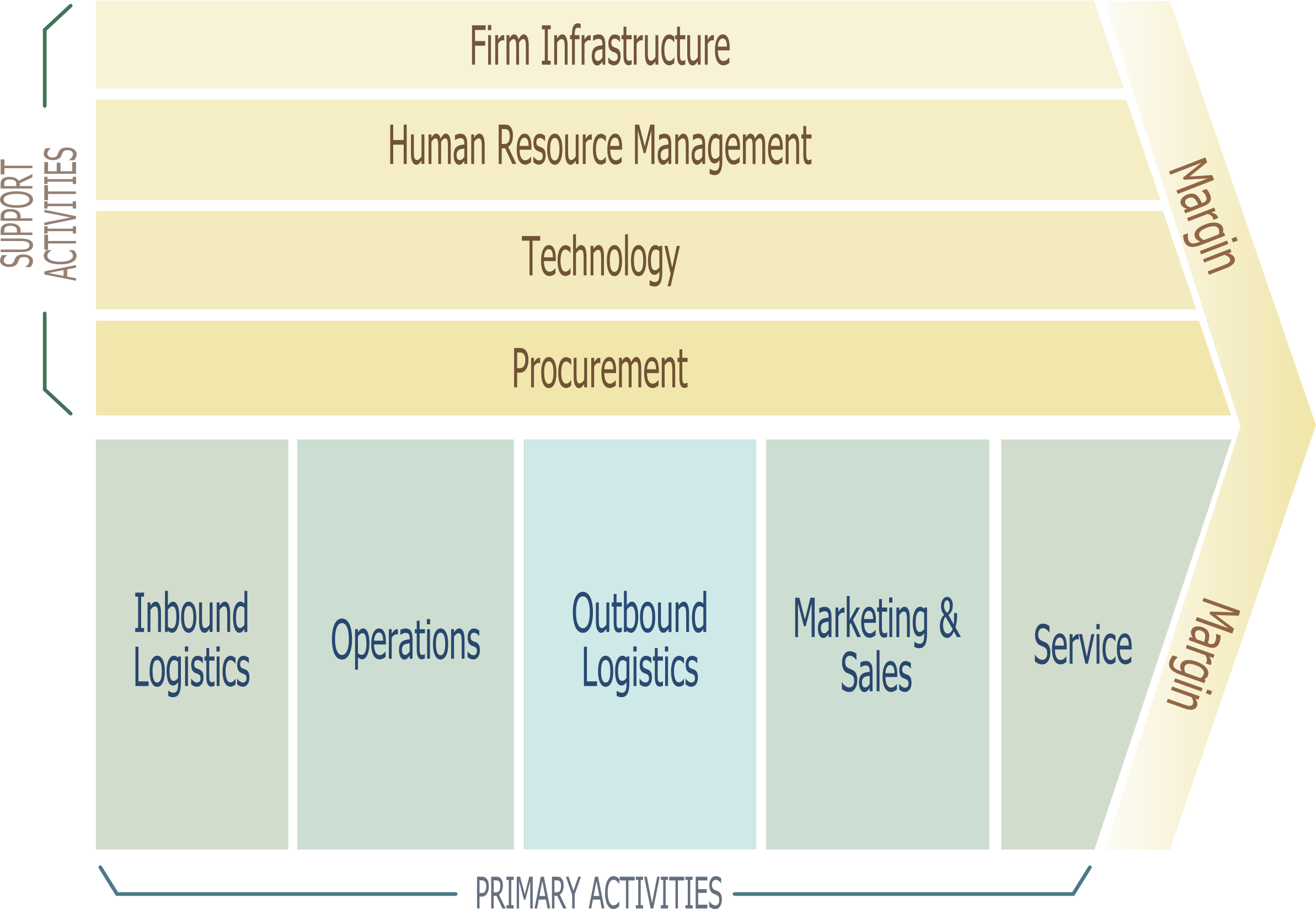|
Service System
A service system (or customer service system, CSS) is a configuration of technology and organizational networks designed to deliver services that satisfy the needs, wants, or aspirations of customers. "Service system" is a term used in the service management, service operations, services marketing, service engineering, and service design literature. While the term frequently appears, it is rarely defined. One definition of a service system is a value coproduction configuration of people, technology, internal and external service systems connected via value propositions, and shared information (language, laws, measures, etc.). The smallest service system is a single person and the largest service system is the world economy. The external service system of the global economy is considered to be ecosystem services. Service systems can be characterized by the value that results from interaction between service systems, whether the interactions are between people, businesses, or n ... [...More Info...] [...Related Items...] OR: [Wikipedia] [Google] [Baidu] |
Service (economics)
A service is an "(intangible) act or use for which a consumer, firm, or government is willing to pay." Examples include work done by barbers, doctors, lawyers, mechanics, banks, insurance companies, and so on. Public services are those that society (nation state, fiscal union or region) as a whole pays for. Using resources, skill, ingenuity, and experience, service providers benefit service consumers. Services may be defined as intangible acts or performances whereby the service provider provides value to the customer. Key characteristics Services have three key characteristics: Intangibility Services are by definition intangible. They are not manufactured, transported or stocked. One cannot store services for future use. They are produced and consumed simultaneously. Perishability Services are perishable in two regards: * Service-relevant resources, processes, and systems are assigned for service delivery during a specific period in time. If the service consumer does not ... [...More Info...] [...Related Items...] OR: [Wikipedia] [Google] [Baidu] |
Employees
Employment is a relationship between two parties regulating the provision of paid labour services. Usually based on a contract, one party, the employer, which might be a corporation, a not-for-profit organization, a co-operative, or any other entity, pays the other, the employee, in return for carrying out assigned work. Employees work in return for wages, which can be paid on the basis of an hourly rate, by piecework or an annual salary, depending on the type of work an employee does, the prevailing conditions of the sector and the bargaining power between the parties. Employees in some sectors may receive gratuities, bonus payments or stock options. In some types of employment, employees may receive benefits in addition to payment. Benefits may include health insurance, housing, disability insurance. Employment is typically governed by employment laws, organisation or legal contracts. Employees and employers An employee contributes labour and expertise to an ... [...More Info...] [...Related Items...] OR: [Wikipedia] [Google] [Baidu] |
Credit (creative Arts)
In general, the term credit in the artistic or intellectual sense refers to an acknowledgment of those who contributed to a work, whether through ideas or in a more direct sense. Credit in the arts In the creative arts, credits are an acknowledgment of those who participated in the production. They are often shown at the end of movies and on CD jackets. In film, video, television, theater, etc., ''credits'' means the list of actors and behind-the-scenes staff who contributed to the production. Non-fiction In non-fiction writing, especially academic works, it is generally considered important to give credit to sources of information and ideas. Failure to do so often gives rise to charges of plagiarism, and "piracy" of intellectual rights such as the right to receive a royalty for having written. In this sense the financial and individual meanings are linked. Academic papers generally contain a lengthy section of footnotes or citations. Such detailed crediting of sources prov ... [...More Info...] [...Related Items...] OR: [Wikipedia] [Google] [Baidu] |
Payment
A payment is the voluntary tender of money or its equivalent or of things of value by one party (such as a person or company) to another in exchange for goods, or services provided by them, or to fulfill a legal obligation. The party making the payment is commonly called the payer, while the payee is the party receiving the payment. Payments can be effected in a number of ways, for example: * the use of money, cheque, or debit, credit, or bank transfers, whether through mobile payment or otherwise * the transfer of anything of value, such as stock, or using barter, the exchange of one good or service for another. In general, payees are at liberty to determine what method of payment they will accept; though normally laws require the payer to accept the country's legal tender up to a prescribed limit. Payment is most commonly effected in the local currency of the payee unless the parties agree otherwise. Payment in another currency involves an additional foreign exchange tra ... [...More Info...] [...Related Items...] OR: [Wikipedia] [Google] [Baidu] |
Entrepreneur
Entrepreneurship is the creation or extraction of economic value. With this definition, entrepreneurship is viewed as change, generally entailing risk beyond what is normally encountered in starting a business, which may include other values than simply economic ones. An entrepreneur is an individual who creates and/or invests in one or more businesses, bearing most of the risks and enjoying most of the rewards.The process of setting up a business is known as entrepreneurship. The entrepreneur is commonly seen as an innovator, a source of new ideas, goods, services, and business/or procedures. More narrow definitions have described entrepreneurship as the process of designing, launching and running a new business, which is often similar to a small business, or as the "capacity and willingness to develop, organize and manage a business venture along with any of its risks to make a profit." The people who create these businesses are often referred to as entrepreneurs. While def ... [...More Info...] [...Related Items...] OR: [Wikipedia] [Google] [Baidu] |
Citizens
Citizenship is a "relationship between an individual and a state to which the individual owes allegiance and in turn is entitled to its protection". Each state determines the conditions under which it will recognize persons as its citizens, and the conditions under which that status will be withdrawn. Recognition by a state as a citizen generally carries with it recognition of civil, political, and social rights which are not afforded to non-citizens. In general, the basic rights normally regarded as arising from citizenship are the right to a passport, the right to leave and return to the country/ies of citizenship, the right to live in that country, and to work there. Some countries permit their citizens to have multiple citizenships, while others insist on exclusive allegiance. Determining factors A person can be recognized or granted citizenship on a number of bases. Usually, citizenship based on circumstances of birth is automatic, but an application may be required. ... [...More Info...] [...Related Items...] OR: [Wikipedia] [Google] [Baidu] |
Network Effect
In economics, a network effect (also called network externality or demand-side economies of scale) is the phenomenon by which the value or utility a user derives from a good or service depends on the number of users of compatible products. Network effects are typically positive, resulting in a given user deriving more value from a product as more users join the same network. The adoption of a product by an additional user can be broken into two effects: an increase in the value to all other users ( "total effect") and also the enhancement of other non-users' motivation for using the product ("marginal effect"). Network effects can be direct or indirect. Direct network effects arise when a given user's utility increases with the number of other users of the same product or technology, meaning that adoption of a product by different users is complementary. This effect is separate from effects related to price, such as a benefit to existing users resulting from price decreases as ... [...More Info...] [...Related Items...] OR: [Wikipedia] [Google] [Baidu] |
Value Proposition
In marketing, a company’s value proposition is the full mix of benefits or economic value which it promises to deliver to the current and future customers (i.e., a market segment) who will buy their products and/or services. It is part of a company's overall marketing strategy which differentiates its brand and fully positions it in the market. A value proposition can apply to an entire organization, or parts thereof, or customer accounts, or products or services. A value proposition can be written as a business or marketing statement (called a "positioning statement") which summarizes why a consumer should buy a product or use a service. A compellingly worded positioning statement has the potential to convince a prospective consumer that a particular product or service the company offers will add more value or better solve a problem (i.e. the "pain-point") for them than other similar offerings will, thus turning them into a paying client. The positioning statement usually co ... [...More Info...] [...Related Items...] OR: [Wikipedia] [Google] [Baidu] |
Value Network
A value network is a graphical illustration of social and technical resources within/between organizations and how they are utilized. The nodes in a value network represent people or, more abstractly, roles. The nodes are connected by interactions that represent deliverables. These deliverables can be objects, knowledge or money. Value networks record interdependence. They account for the worth of products and services. Companies have both internal and external value networks. Types External networks include customers/recipients, intermediaries, stakeholders, complementary, open innovation networks and suppliers. Internal networks focus on key activities, processes and relationships that cut across internal boundaries, such as order fulfillment, innovation, lead processing and customer support. Value is created through exchange and the relationships between roles. Definition Christensen defines value network as: "The collection of upstream suppliers, downstream channels ... [...More Info...] [...Related Items...] OR: [Wikipedia] [Google] [Baidu] |
Value Chain
A value chain is a progression of activities that a firm operating in a specific industry performs in order to deliver a valuable product (i.e., good and/or service) to the end customer. The concept comes through business management and was first described by Michael Porter in his 1985 best-seller, ''Competitive Advantage: Creating and Sustaining Superior Performance''. The concept of value chains as decision support tools, was added onto the competitive strategies paradigm developed by Porter as early as 1979. In Porter's value chains, Inbound Logistics, Operations, Outbound Logistics, Marketing and Sales, and Service are categorized as primary activities. Secondary activities include Procurement, Human Resource management, Technological Development and Infrastructure . According to the OECD Secretary-General the emergence of global value chains (GVCs) in the late 1990s provided a catalyst for accelerated change in the landscape of international investment and trade, ... [...More Info...] [...Related Items...] OR: [Wikipedia] [Google] [Baidu] |
Service Provider
A service provider (SP) is an organization that provides services, such as consulting, legal, real estate, communications, storage, and processing services, to other organizations. Although a service provider can be a sub-unit of the organization that it serves, it is usually a third-party or outsourced supplier. Examples include telecommunications service providers (TSPs), application service providers (ASPs), storage service providers (SSPs), and internet service providers (ISPs). A more traditional term is service bureau. IT professionals sometimes differentiate between service providers by categorizing them as type I, II, or III. The three service types are recognized by the IT industry although specifically defined by ITIL and the U.S. Telecommunications Act of 1996. *Type I: internal service provider *Type II: shared service provider *Type III: external service provider Type III SPs provide IT services to external customers and subsequently can be referred to as external ... [...More Info...] [...Related Items...] OR: [Wikipedia] [Google] [Baidu] |


.jpg)

